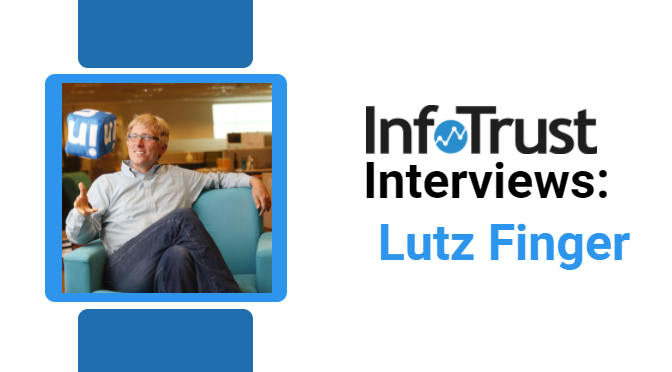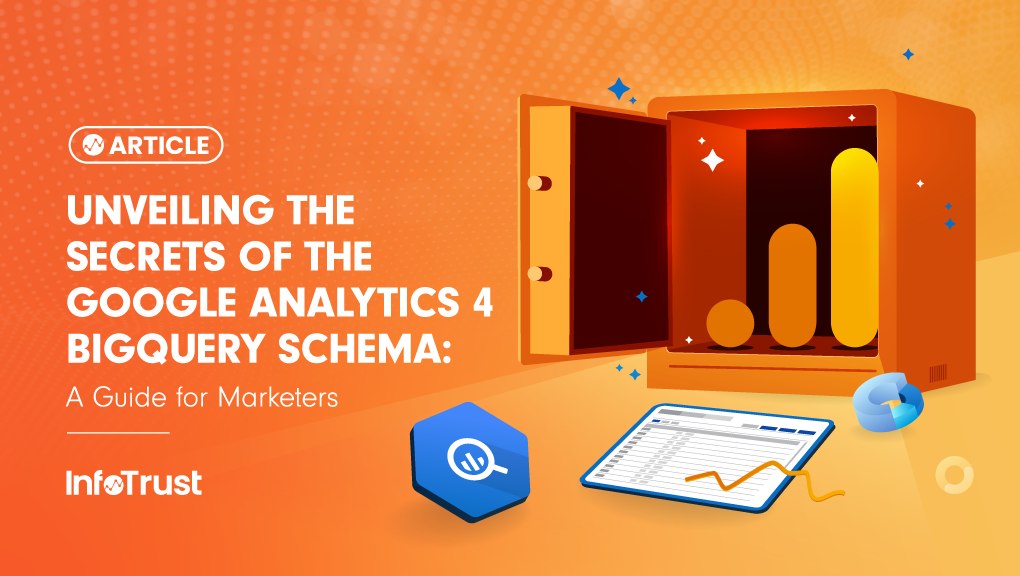
Lutz Finger is the Director of Analytics at LinkedIn and Author of the book Ask, Measure, Learn, a comprehensive guide on understanding big data and social media analytics. The book benefits managers and data scientists alike. We spoke with Lutz about his career at LinkedIn, how to define value, and the future of data analytics.
About Lutz Finger
ML: You’ve been in the world of analytics now for quite some time. What keeps you interested?
LF: I don’t think I’ve been in the analytics world for that long. I’m a quantum physicist by training, and I’ve been in the data industry for quite some time, but not necessarily in the analytics world in terms of social networks and other digital applications. In the past, I did a trainee program in sales, and I got my MBA and built up a customer center for Dell. Then, I came back to data and created my own company, which looks at data and tries to understand how information flows in our digital world. I eventually wrote a book about the process, sold the company and came to LinkedIn, where I’m leading a data team.
ML: Can you tell us more about the process of starting Fisheye Analytics? What need do you think it solves in the market?
LF: I started Fisheye Analytics because I was excited by the potential of gathering social media data. I don’t think the industry as a whole sees how much of an asset data is. It’s diamonds. With my company, I saw that there was an ability to take media, news and blog data and build a database to put it in. So, I had a solution and a database, but I had no clue what to do with it. It took me a good three years to figure out how to create value with the data. That actually led me to write the book, Ask, Measure, Learn, because many people in this world do not actually ask, measure and learn. They measure, but they never ask or learn, which I learned how to do the hard way. It took me a while to figure out that “ask” is actually the most important part before you start collecting data.
ML: What motivated you to sell the company?
LF: Let’s dig into what the company actually did. We collected social media data and then offered insights based on those data points to governments, NGOs and companies. What kinds of insights can you get through social media? Well, you can get sentiment, and we all agree that sentiment is kind of BS, so that’s not a good idea. You can count how often a keyword is repeated, but that is skewed, because there is an exploding amount of Tweets happening. So it’s very hard for you to get a normalization baseline. There are certain things you can do, like noting when somebody is mentioned, and creating an information system around those mentions. Eventually, we started tracking exactly how comments propagated and how impactful certain content was. The hurdle was convincing potential clients how valuable this type of data is. In order to convince them, we needed a long sales funnel.
Why did I sell the company? Our Business was nicely growing with 40% and more year on year. But we sold it because the pre-sales costs for selling analytical insights were very high and became over time too risky for a startup. I sold to a company that already had a huge sales force in place. Another reason I sold it is because, if you use data to build a business, there are tons of other companies doing the same thing. So, you have to come up with a unique business model to make it sustainable. Our model was sustainable, but only because we spent so much upfront sales investment. It was a risky bargain, so we decided to sell.
ML: Many entrepreneurship lessons there, for sure. In terms of your current job, can you tell us a bit about what the role of Director of Analytics looks like within an organization that has so much data?
LF: I can’t say much about my role due to confidentiality, but I am currently leading an exercise called the Economic Graph Challenge. This challenge reflects the vision LinkedIn has for creating economic opportunity for every professional in the world. With data we match employment opportunities to relevant skills. We asked universities and think tanks to participate in helping us think through how to use that kind of data most effectively. We selected eleven teams, and one of my tasks is to support those teams with data and insights.
For example, my team lately supported the World Economic Forum with insights about Human Capital. We show here why a job is only a shorthand for a collection of skills. (link: https://reports.weforum.
ML: You often speak at conferences. Do you have a typical topic of choice?
LF: I believe our industry as a whole is missing the connection to the business. So, when I speak at conferences or teach at Cornell and Harvard, I try to explain why managers need to understand analytical thinking and why an analyst needs to understand managerial needs. We can do wonders if those two start working more closely together.
ML: You work at LinkedIn, you publish articles, you speak at conferences and you teach at, arguably, two of the most prestigious universities in the world. How do you find time?
LF: I have twenty-four hours, and if that’s not enough, I work into the night. LinkedIn is a very demanding job, and writing my book was also a demanding process. I wish I could write more articles. I usually only write them when I get the time, like when I’m on an airplane. At the university, I teach mostly on weekends.
About Ask, Measure, Learn
ML: Let’s talk about your book, Ask, Measure, Learn. You’ve already mentioned that you want people to give weight to all three concepts instead of jumping straight to measurement like many often do. What is the most important point in this book?
LF: The book gives managers a very clear insight into the difficulty of data roles using social media data as an example. The book details challenges by department: marketing, sales, HR, product, and so on. For each of those areas, I bring up cases that can be solved with social media data. I also cover what can go wrong in terms of using that data. The question you’re asking needs to be right first before you can answer it with data. You can stretch the book to apply to all other data assets as well, internal or otherwise. The reason that I highlight social media data is because most people can relate to it.
ML: What do you think is the biggest take-away from the book?
LF: First, ask the right question. Then, use the right data and act on it.
ML: In the book, you speak a lot about value. How do you define value? Depending on the industry, value can be a very interesting concept. In retail, value supposedly is defined by how you can get somebody to buy something, or how you can grow the lifetime of an account, or how much a person spends. But CPG organizations often struggle with measuring value online, since not much can actually happen besides a consumer liking your brand, or maybe sharing something about their experience. How should we think about value through the lens of social media data?
LF: Every business owner or manager should understand what value means. It only gets lost once you put a lot of measurement and metrics around it. If you’re focusing on customer lifetime value, then you have one metric, and everything you do should affect this metric. In other areas, you might ask questions surrounding delivery speed and time in inventory. You know what makes your business more effective. For example, a media company would measure how many times people read their articles. After seeing which ones perform best, they could charge more for advertising on those pages, which means the value is tied to the price of the advertisement.
Every business has different ideas of what value means for them. Start there. Do not start with what data you could possibly get. Start with understanding the value of your particular business and then figure out how to improve it.
ML: You say that every business owner or manager has an idea of what value is. Do you think they’re always right? It seems like organizations think they know what value they bring to the table. Some are still unsuccessful. Many businesses cannot even sell their services or products because they are not properly able to define the actual value they bring.
LF: True. Let’s talk about the basic idea of industry organization. Henry Ford came up with this great idea to sell only black cars, which revolutionized the market because he reduced his production complexity, and therefore had the ability to produce cars extremely cheaply. In doing so, he redefined what his value was. His competitor thought value had to do with choice, and Ford argued that the value was in owning a car. The competitors didn’t have the right business model. Ford did. Making sure you have the right business model is key.
Once you know that frame, then you can start working. Formulate a hypothesis that you can test with analytics and build around those results. But the question of what the focus is should come first, and you can then use that focus to find the data, not the other way around.
ML: I’ve heard a lot of debate about whether we should measure everything that can possibly be measured. One argument is, data collection is so cheap that you should just measure everything and sort it out later. The other school of thought encourages more thoughtful, critical thinking about what you really need to measure, and only measuring and collecting based on those parameters. I’m curious to hear your thoughts on this.
LF: Let’s start with the “measuring is cheap” point. Measuring is not cheap. Yes, it’s become relatively cheaper over the years, but the amount of data we can store has also become disproportionately bigger, so in aggregate, it’s not cheaper. Ask any CIL of a company whether he spends more today than he did years ago, and he will say that he spends more today. The second thing is, if you think about a normal line in a two-dimensional space, how many points do you need to describe that line? Two, right? If I could offer you a solution to actually save millions of points on that line, would you take it? No. You know it’s a line. Two points is sufficient information to determine what the line looks like. Shoving more dots onto the line just because you can doesn’t make the line any more clear.
Do you need more data to make your point? If you can’t find the point, there might be a reason. If you can’t find insight, there might be a reason. The most essential need you have is actually finding the right question to ask. Think about Alta Vista and Google. Alta Vista, the best search engine ever, had a lot of smart people, and a lot of data. They weren’t stupid. They probably did not throw any data away. But, they didn’t save the right aggregate of the data. And then, Google took them over. In less than 10 months, Google killed them. You could say, “if Alta Vista would have saved everything, their business could have been spared.” But saving everything isn’t the answer. Being smart about the questions you ask is what matters.
If something doesn’t make sense to save, then we shouldn’t save it. Think about your own photos. You take photos of your friends and everybody says, “Take as many pictures as possible. It’s cheap. It’s digital.” You take ten photos, but you actually only like one of them. Now, it would be smart to delete the other nine, right? Because you’re only interested in the one, and you’ll never go back to look at the others. The moment was captured perfectly by one, not ten.
ML: If, at the end of the day, it really comes down to asking the right question and then using data to build a hypothesis and answer the question, how should we structure that question? Are there any points or models to consider?
LF: I would think about what action you want to happen as a result of the question. You can come up with tons of questions, but what’s harder to do is take the hypothesis you arrive at as a result of your question, and ask yourself, “What will I do next once I have this answer? Will that impact my core metric?” Ask yourself this for every question you come up with. If you do this for ten questions, I’m pretty sure you will figure out that one has a higher probability of having an impact. Start with that one.
ML: Reports are projecting a shortage of analytics talent. How can companies begin to address this, especially over the next few years? How do you think colleges are preparing students for the demands of the current business and market needs?
LF: I think the market will catch up in another three or four years. Currently, a lot of effort is happening to train people in technical data skills. The more complex skill is actually just understanding what’s possible with data and phrasing the right question. That is not a skill that you can learn through studying commands and code. That’s not the point. The point is actually understanding your business, understanding what’s possible, and mapping it out.
One study from Mc Kinsey says that we have a shortage of technical talent. It then goes on to say that we have a shortage of managerial talent. But when you look at it, the difference is 1:10. That does not mean that data scientists are so difficult to manage that they need ten managers per person. It means that we have a shortage of people in the market who understand data. That’s actually a bigger issue than having a shortage of people who know how to format data.
ML: What do you see changing over the next few years in this industry? What excites you?
LF: I believe that the industry has matured in many respects. We see changes here and there, but the times of big shifts are over. We are entering an era of actually putting data to work and changing business models by applying data. It’s a time of the Ask. That’s pretty exciting.
ML: Is there anything that scares or concerns you about the future of data?
LF: Beginners in the data space are going to make wrong conclusions. They’re going to mix up causes and correlations. These mistakes can taint our knowledge, but mistakes are bound to happen. If we don’t try, we won’t succeed.
Resources:
You can visit Lutz’s blog and check out his book, Ask, Measure, Learn: Using Social Media Analytics to Understand and Influence Customer Behavior









